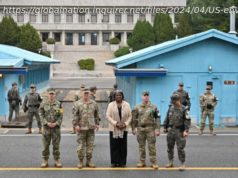Korea’s existing eight main airlines will be joined by three more, including Air Premia, which wants to change the type of airlines Korea has, and how airlines do business. Are passengers ready?
Funding has been similar to a tech start-up. Air Premia went to venture capitalists and financial institutions, with no shareholder so far having more than 20%, according to a spokesperson. Whereas start-up airlines often have only a few investors, Air Premia in January stated it has seven public investors. A spokesperson said there are additional undisclosed investors. Series B funding raised $147 million, and Air Premia aims for profitability within three years.
One shareholder is Hong Sung Bum, the founder of Hugel, a pharmaceutical company that manufactures Botox. An Air Premia spokesperson said Hong wanted to diversify into new businesses. Hugel is not an investor in Air Premia, but the affiliation helped Air Premia be co-title sponsor of the LA Open golf tournament, which Hugel has sponsored in the past. This unusually early marketing gave Air Premia exposure as it targets investors, and future passengers, in the Los Angeles Korean-American community.
Korea’s smaller airlines have attracted financial interest. Jeju Air, the oldest and biggest of the new entrants, was first to IPO in a successful debut that briefly saw its market capitalization exceed that of long-established Asiana Airlines. Asiana’s Air Busan and independently-owned T’Way Air also went public.
The new entrants are LCCs flying narrowbody aircraft like the A321 and 737-800, but Air Premia plans a hybrid model with the widebody 787-9. Air Premia does not intend to operate narrowbody aircraft, and nor will it fly domestically – a first for a Korean airline.
Is the market ready for innovation? Korea’s LCCs found success offering quick and cheap trips to local Jeju Island or nearby international cities. Some passengers even make day trips for ramen in Fukuoka or shopping in Osaka. There is a smaller market for passengers who have the time required for the longer journey to the US or Europe, where the fare is higher than a short-haul trip.
Initially Air Premia will fly regionally within Asia. Its first three 787-9s are leased from Air Lease and arrive in July, September and November 2020. Passengers flights are planned to start in September, likely to Vietnam’s Ho Chi Minh or Hanoi to capitalise on surging outbound Korean demand, according to a spokesperson. Daily service to Hong Kong, Osaka and Tokyo will follow. There is congestion across key Asian airports, but Air Premia is confident it will secure slots under policies that favor new entrants. Korea’s traffic rights are largely open.
Korean LCCs serve those markets with second-hand aircraft that are inexpensive to operate and seat around 180 passengers. Air Premia will be leasing new widebodies seating 309, less than double the capacity of a narrowbody.
Air Premia is aware of this financial implication. “Many people said that to us, but management has calculated it,” the spokesperson said. One potential advantage over competitors’ narrowbody flights is that Air Premia’s 787 can carry cargo, earning revenue on upwards of 12-15 tonnes, the spokesperson said.
Korean LCC Jin Air received widebody 777-200s from big sister Korean Air. There were plans for Jin Air to fly long-haul and have six 777s by the end of 2018, but it has only four 777s and does not serve any long-haul destination year-round.
Larger aircraft help during peak demand, but pose higher risk in off-peak periods. Ben Baldanza, former CEO of Spirit Airlines and a board member of Icelandic carrier Wow Air, wrote that Wow’s failure was largely due to the drain of having widebodies in off-peak periods.
Air Premia had an unexpected setback from the resignation of co-founder and CEO Dr.
Home
United States
USA — Korea Air Premia is changing Korean aviation. Its first office? A Seoul WeWork.






